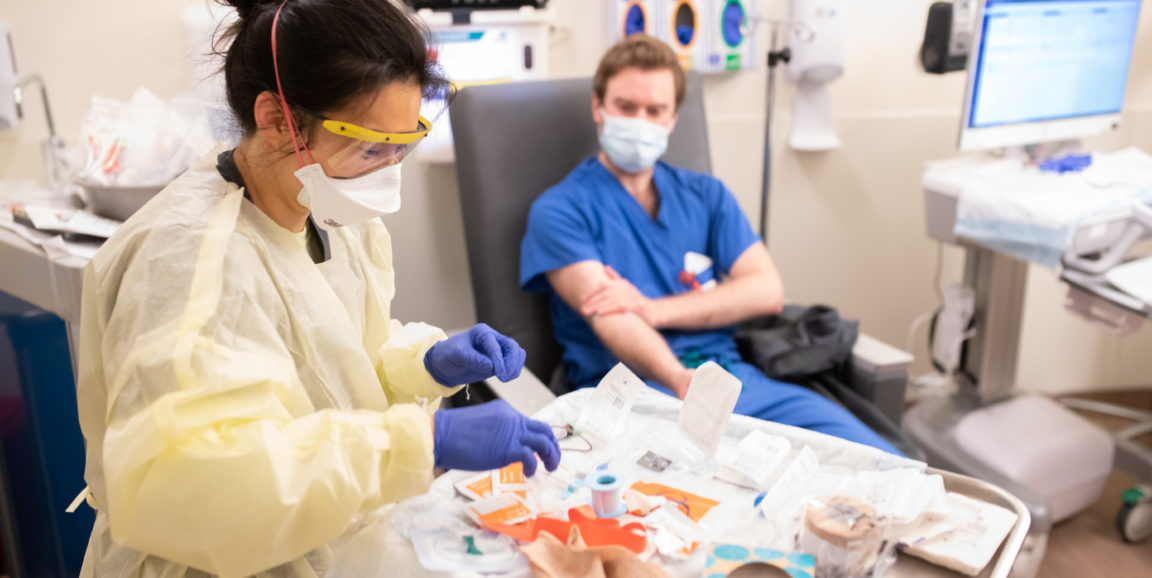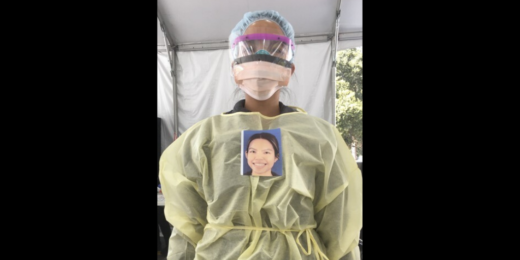Seven weeks after suspending nonemergency services in response to the COVID-19 pandemic, Stanford Health Care resumed almost all surgeries, diagnostic tests and other procedures.
The move followed testing of the majority of health care workers and the implementation of safety procedures that protect patients, staff and the community. Given the very low infection rates, an ample supply of personal protective equipment, and the mitigating steps taken, leaders said this is the right time to start treating patients who have been waiting for care.
For a 1:2:1 podcast, I spoke to Sam Wald, MD, vice president and associate chief medical officer of Stanford Health Care about the reopening. This Q&A is edited and condensed from our conversation.
Stanford Health Care began elective surgeries two weeks ago. How did it go?
Everything went very well. One of our major points was testing -- as much as possible -- all of our patients coming in, and doing that testing in advance. We met our goals in advance of surgery, and did have some people test on the day of surgery.
Thousands of employees were tested over the past few weeks. Everyone is aligned around the conviction that testing and personal protective equipment create a safe environment, and Stanford as a community has really leaned into that philosophy.
What was the range of elective surgeries that took place?
Every single service had surgery. We had a big jump in our orthopaedic surgery -- a lot of those had been postponed. We did general surgeries. We had people coming back for gynecologic and urologic surgeries. We expanded our oral, head and neck surgeries.
A number of our departments that perform non-elective surgeries on more critically ill patients -- such as cardiac surgery and neurosurgery -- continued and even expanded further with the loosening of the guidelines.
Was there a barometer for success during the first week?
Our success is creating a safe environment where our patients and our staff feel comfortable, and where we can give the exemplary service and health care that we expect out of Stanford Medicine.
You're an anesthesiologist and also have an MBA. Did anything prepare you for something like this?
There's no way to prepare for the specifics of this because this is unprecedented. I would say that being flexible and being able to change and respond to a dynamic situation is really important.
What I did know before is that this institution really rises to a crisis; we handle things incredibly well. Here, we had a sustained crisis that kept going, and we came up with new and innovative ways to respond in a constantly changing situation.
The fact that we stood up our own testing sites, the fact that we got ahead on testing employees and testing patients, and the safety standards we came up with -- all of this is incredible to see. That's something that only happens at a place like Stanford.
Eighty five percent of postponed surgeries have now been rescheduled. What about the other group -- the 15% of patients who are still reluctant? What did you tell them?
We are trying to create the safest environment possible for patients to receive care. We're always going to give them outstanding care. We are doing our very best to mitigate any circumstance that provides any risk to our patients, to the community and to our staff.
We want to maintain as high a standard as possible on safety; and so we wanted to ensure that we have all the mechanisms in place to ensure appropriate capacity, personal protective equipment for our staff and appropriate testing of both patients and health care workers to provide the safest care.
Is there any known incidence of a health care worker at Stanford Health Care infecting a patient with COVID-19 virus?
No. We are not aware of any incidences, and that's why testing is so important -- because people can be asymptomatic. That's also why personal protective equipment and testing in such a near-universal fashion is critical.
So, looking ahead, what do you expect to see?
Over the next few weeks, we'll continue to refine all of the safety procedures we've put in place. We have had some new scenarios come up, some things that we've learned to do better.
I think we will learn how to better use PPE and masking, along with how to implement testing algorithms in our clinics, surgical areas and inpatient units. We're already functioning at an extremely high level, but we'll keep pushing that envelope even further.
Listen to more 1:2:1 podcasts on COVID-19 from Paul Costello at https://soundcloud.com/stanfordmed/sets/covid-19
Image by Steve Fisch






